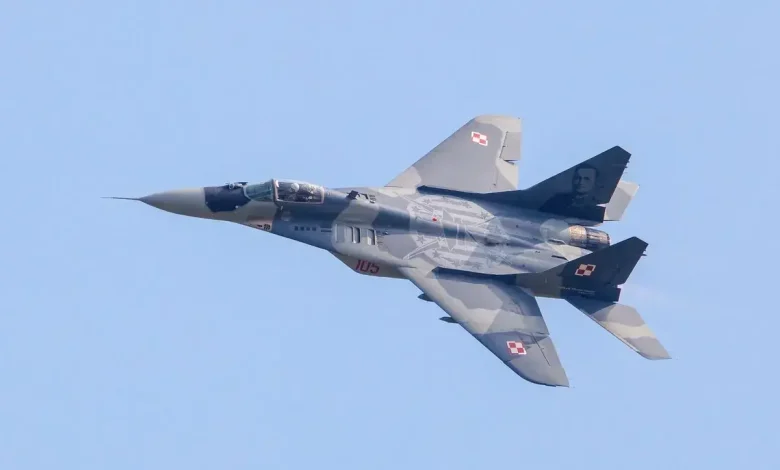NATO Intercepts Russian Spy Plane With Transponder Turned Off

Two Polish fighter jets intercepted a Russian spy aircraft flying without an active transponder over the Baltic Sea on Tuesday, Poland’s military said on Wednesday.
The Russian Il-20 had not filed a flight plan for its “reconnaissance mission” in international airspace, Warsaw’s operational command said in a statement.
Why It Matters
The Baltic Sea is sometimes dubbed a “NATO lake,” bordered by members of the alliance. But Russia has a significant military presence in its Kaliningrad exclave on the Baltic coast, sandwiched between Poland and Lithuania.
NATO says Russian aircraft travelling to and from Kaliningrad often skirt near NATO airspace without using transponders, filing a flight plan or interacting with air traffic control. NATO nations regularly contribute aircraft to countries close to Russia to help monitor alliance airspace, and have beefed up naval assets in the Baltic.
What To Know
The aircraft did not violate Poland’s airspace. Two Polish MiG-29 fighter jets escorted the Russian aircraft from the area, Warsaw said.
Newsweek has reached out to the Russian Defense Ministry for comment via email.
Germany said last month two of its Eurofighter aircraft had identified a Russian Il-20M spy plane flying in international airspace without a flight plan. The aircraft had not established radio contact, Berlin’s delegation to NATO said in a statement. The Swedish military escorted the aircraft away.
British fighter jets intercepted a Il-20 over the Baltic Sea in mid-April. Poland’s military said in said in June British aircraft also intercepted a Russian Il-20 that had violated Polish airspace over the Baltic. “This is another case of provocative testing of the readiness of NATO member states’ systems,” Warsaw said at the time.
The Il-20—sometimes referred to as Coot-A in NATO jargon—hoovers up intelligence like radar signals and communications, especially those that could give away information on missile or air defense systems. These “will be among the most important systems monitored,” said Frederik Mertens, a strategic analyst with the Dutch research organization, TNO.
NATO countries regularly conduct similar intelligence-gathering missions, including with the Boeing-made Rivet Joint reconnaissance aircraft. “The Russians do it. The Chinese do it. NATO does it,” Mertens told Newsweek. It is “basic military professionalism.”
Around 20 Russian drones crossed into Poland last month, forcing multiple NATO nations to respond with jets and other aircraft. In a separate incident in September, Estonia said three Russian fighter jets, able to carry advanced, nuclear-capable missiles, had violated Estonian airspace for 12 minutes.
Both countries triggered NATO’s Article 4, in which member nations come together to discuss “whenever, in the opinion of any of them, the territorial integrity, political independence or security of any of the parties is threatened.”
Russia said it had not deliberately targeted Poland, although several European officials described the incident as a test of NATO unity. Moscow denied its three MiG-31 breached Estonian airspace while en route to Kaliningrad.
Shortly after the drone incursions into Poland, multiple NATO countries put forward more fighter jets and other assets to the eastern flank under an initiative dubbed Eastern Sentry.
What People Are Saying
“Thanks to the high combat readiness, professionalism of the pilots, and the efficient functioning of the air defense system, the operation was carried out quickly, effectively, and safely,” the Polish military said in a statement.
“The ability to detect, intercept, and monitor potential threats is crucial for maintaining security and stability in the Baltic region,” NATO’s Allied Air Command said earlier this year.
[Updated on 10/29/2025 at 5: 10 a.m. ET: This article was updated with additional information.]
[Updated on 10/29/2025 at 7: 40 a.m. ET: This article was updated with additional information.]





